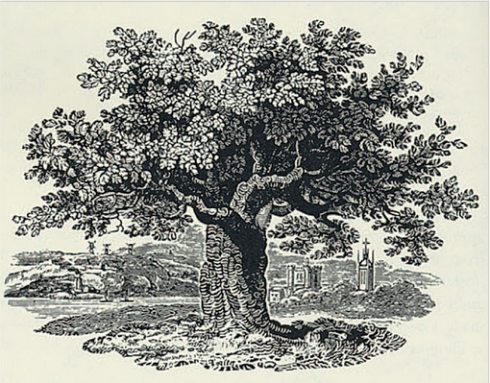While going through my files I came upon an article about the Inn by Hunterdon historian Egbert T. Bush. It tells us much about how popular and important the Inn was, not just to Stockton but also to the surrounding towns.
Stockton
Pole Raising in the Days of Lincoln
This article was originally published in “The Delaware Township Post” on March 1, 2009. The Post went out of business, and the articles I published there have disappeared. It seems appropriate now to republish this article, greatly modified, here.
Reading-Wolverton Farm, part two
This is a continuation of the history of the farm once owned by Richard Reading, then later by John Woolverton and wife Rachel Quinby. After John Wolverton’s death, it came to his son Samuel.Continue reading »
Howell House, part one
Not long ago, Dennis Bertland inquired about an old house that might have been located on the William Rittenhouse tract that I recently wrote about (“The Rittenhouse Tavern.” Dennis’ inquiry can be found in the comments section.) It is located in a blank space on the Hammond Map between the Wickecheoke Creek and Shoppons Run. Who did that space belong to?
A Stockton Inn History
This article is a continuation of the article by Egbert T. Bush titled “When Stockton Was Not So Dry.” (Part One and Part Two.) Today I will enlarge on Mr. Bush’s short history of the Stockton Inn, which is now for sale. It is my hope that by fleshing out this history, a purchaser might be found who will value it as well as the lovely architecture of the place.
When Stockton Was Not So Dry, part two
This part of Mr. Bush’s article deals primarily with the history of the tavern in Stockton, which began its life across the road from the Sharp-Lambert store (part one), but ended it as the Stockton Inn, at Bridge and Main Streets. (As usual, Mr. Bush’s article is in italics and my comments are not.)
When Stockton Was Not So Dry
Egbert T. Bush was very fond of grand old trees, and when they had to come down, he lamented the loss in his articles, including one that I published awhile ago, titled “Old Sentinel Oak Has Passed.” That huge tree, or as Bush would call it, a “Monarch,” once stood along Route 523 as you enter Stockton. Today’s article should have preceded “Old Sentinel Oak,” as it concerns the neighborhood of that great tree before it was taken down.
Requiem for a Monarch
Given that the Stockton Inn is now for sale, and a radical proposal for development of the site has been offered by the seller, I thought it would be appropriate to publish this article by Mr. Bush about a previous “improvement” to the Borough that took place not far from the Inn.
Indians Thought Lightning Would Not Strike A Beech
Writer Has Never Found a Beech Tree That Had Been Struck
Other Facts and Queries
by Egbert T. Bush, Stockton, NJ
published in the Hunterdon Co. Democrat, December 11, 1930
 This article, with which I end the year 2014, can be seen as a follow up to Bush’s article previously published here called “Gathering Nuts Was Once an Industry.” There is nothing in the way of genealogy in this article, but it is full of the usual Bush charm.
This article, with which I end the year 2014, can be seen as a follow up to Bush’s article previously published here called “Gathering Nuts Was Once an Industry.” There is nothing in the way of genealogy in this article, but it is full of the usual Bush charm.
The Conklings, Father and Son
This is a continuation of the story by Egbert T. Bush of the “Biggest Log Ever Brought to Stockton,” in which he wrote about the owners of the Stockton Sawmill and the Stockton Spoke Works. These Hunterdon industrialists took risks to build their businesses, and sometimes failed badly. Here are two more examples of failure and success.
